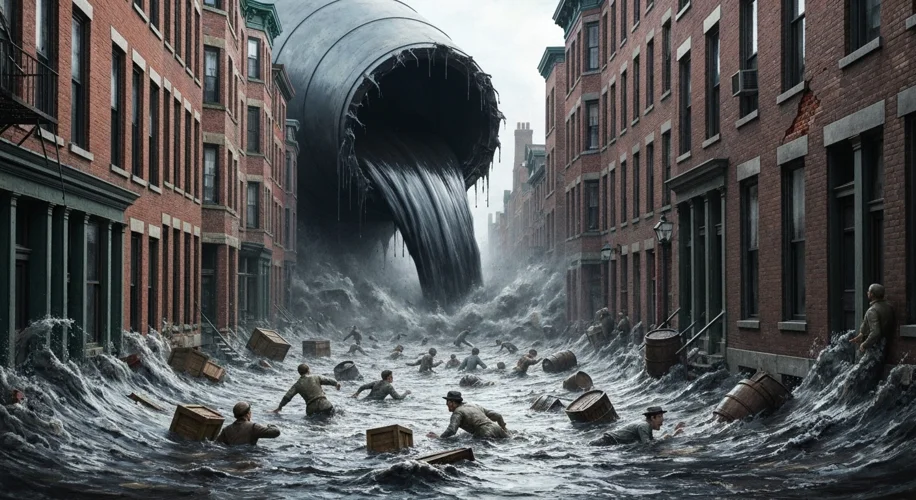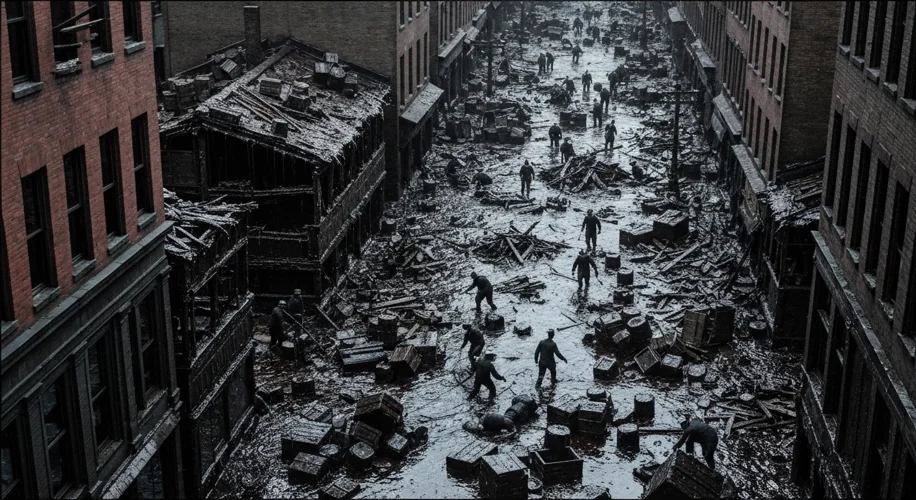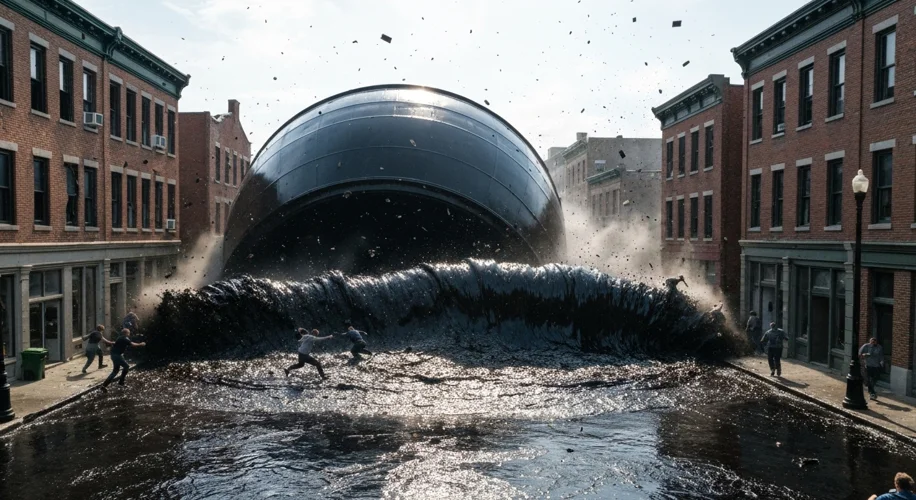The air in Boston’s North End on January 15, 1919, was crisp and cold, the kind of winter day that nips at your ears and promises a clear, sharp evening. Yet, something far more ominous was brewing beneath the surface, quite literally. A colossal, improperly constructed storage tank, looming over Commercial Street like a slumbering iron beast, held within its belly over two million gallons of thick, dark molasses. It was a seemingly innocuous substance, the sweet staple of bakeries and confectioneries, but on this fateful afternoon, it would unleash a torrent of destruction.

The Purity Distilling Company’s tank was an eyesore, a blight on the vibrant Italian immigrant neighborhood. Locals had long grumbled about its presence, the groaning and creaking sounds it made, and the suspicious dark streaks that often oozed from its rivets, staining the nearby buildings and sidewalks. Children would collect the sweet rivulets in jars, unaware of the inherent danger. Some claimed they had even heard the tank hissing like a troubled serpent on warmer days.
This discontent was not unfounded. The tank’s construction had been rushed and shoddy. It was hastily built to meet the surging demand for industrial alcohol, a key component in munitions production during World War I, and later for rum. Witnesses reported seeing the tank leak from the day it was filled, yet its owners, prioritizing profit over safety, merely painted it a dark brown to camouflage the problem. A few days prior to the disaster, workers had even added a fresh coat of paint, a desperate attempt to conceal the growing fissures.
Then, at approximately 12:30 PM, the unthinkable happened. With a thunderous roar that echoed through the narrow streets, the tank ruptured. It wasn’t a leak; it was an explosion. The sheer force of the bursting metal sent a wave of molasses, estimated to be up to 25 feet high at its peak, surging through the neighborhood at an astonishing speed of 35 miles per hour. Imagine a tsunami, but thicker, stickier, and suffocating.
For the residents and workers caught in its path, it was a scene of unimaginable horror. Horses were knocked off their feet, wagons were tossed aside like toys, and buildings were ripped from their foundations. The dense, viscous liquid acted like a battering ram, crushing structures and entombing those within its suffocating embrace. The air filled with the acrid smell of molasses, the screams of the injured, and the groaning of collapsing structures.
Firefighters, police officers, and even sailors from a nearby training ship rushed to the scene. The molasses, however, proved a formidable and deadly adversary. It clung to everything, making rescue efforts incredibly difficult. Rescuers waded through knee-deep muck, trying to pull victims from the thick goo, their movements slow and arduous. The cold weather, which had seemed so benign just hours before, now worked against the rescue, as the molasses began to solidify, trapping victims further.
Tragically, 21 people lost their lives in the disaster, and over 150 were injured. Many of the victims were children playing in the streets or workers on their lunch break. The aftermath was grim. The North End was coated in a thick, sticky layer of molasses, a macabre testament to the day’s events. It took weeks of intensive labor, using salt water pumped from the harbor and fire hoses, to wash away the sugary residue.

The disaster quickly led to one of the longest and most complex class-action lawsuits in Massachusetts history. The victims’ families and survivors sued the United States Industrial Alcohol Company, the parent company of Purity Distilling. The company initially attempted to blame anarchists for bombing the tank, a desperate deflection tactic that was widely ridiculed. Ultimately, after years of legal battles, the court found the company liable, ordering them to pay $600,000 in damages (equivalent to over $10 million today).
The Great Molasses Flood became a grim lesson in the dangers of corporate negligence and the critical importance of safety regulations. It highlighted how greed and corner-cutting could have devastating human consequences. The event spurred significant changes in building codes and industrial safety standards across the United States, ensuring that such a sticky, sweet catastrophe would hopefully never happen again.
Even today, some older residents of Boston claim that on warm summer days, the faint, sweet scent of molasses can still be detected lingering in the North End air, a haunting reminder of the day a city was nearly drowned in its own sweetness.

